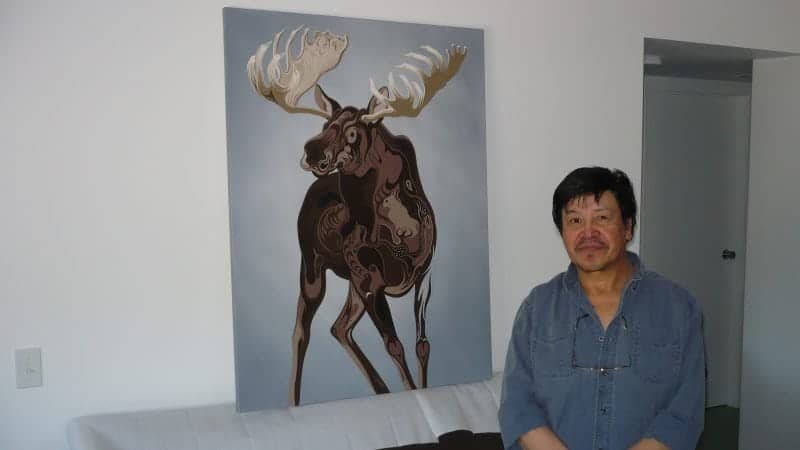For many Northerners, the work of Archie Beaulieau is instantly recognizable. It's bright, bold, enchanting – and unmistakably rooted in a land that seems to live and breath through the canvas.
Beaulieu, who died recently at the age of 65 after a battle with cancer, achieved world-wide acclaim for his distinct depictions of Northern life, namely through his portrayals of Dene tradition, culture and folklore. Drawing influences from his roots as a member of the Tlicho First Nations, Beaulieu developed a unique brand of art that played with colour and married the abstract and the familiar.
From attending a residential school in Fort Smith to enrolling at the Banff School of Fine Art, Beaulieu turned his early love of art into a passion, aiming his brush at Northern wildlife. Beaulieu brought to life iconic images of animals – ravens, bison, swans, moose. The subjects were well-known, but the approach was exciting, groundbreaking and novel. His standout style, however, is just one of the many aspects of his career – and life – being remembered following his death.

For Ken Huss, an art lover and former gallery owner, it was Beaulieu's upending of convention and orthodox that made him a fan. But after meeting Beaulieu, a bountiful working partnership made them friends.
Huss, immediately drawn to Inuit and Dene art after moving to Yellowknife in 1979, bought several limited edition Beaulieu prints in the years that followed. But it wasn't until Huss began working at Arctic Art Gallery in the late 1980s that the two first crossed paths.
Years later, when Huss launched an online gallery showcasing Northwest Territories art, he reached out to Beaulieu and the two re-connected. Together, Huss said the two forged a new and successful professional path.
"We produced over a dozen limited edition serigraphs and prints and I had hundreds of his paintings pass through the gallery to clients quite literally all over the world," Huss said.
Beaulieu's works have lined storied halls and offices belonging to dignitaries and world leaders, with Queen Elizabeth and Pope John Paul II among the long list of notable figures who have received his paintings.
"It often felt like Christmas when Archie would walk through my doors with an armload of paintings, or when we unveiled new limited editions," he said.
According to Huss, another standout moment in their partnership came when he met with Beaulieu while acting as gallery host at the Great Northern Arts Festival in Inuvik. Beaulieu, who had been protective of his often-imitated signature style in the past, caused Huss to think "uh oh" when another artist with a similar brand of art arrived at the same event to paint.
" Just then, out of the corner of my eye I saw Archie come in. He came over to me, looked at the table of paintings and said to the young guy, "'Whose are these?.'" Looking terrified, Huss said, the artist faintly responded they were his, to which Archie replied, "not bad," and proceeded to offer the man advice on which paints to use.
"I said to Archie later on, "'I think you're becoming an elder.'" He just looked at me and grinned," Huss recalled.
Memories like these speak volumes about Beaulieu the person, not just the artist.
"He had a great sense of humour and a smile that was often accompanied by a mischievous twinkle in his eyes. Watching him work with children and young adults was amazing," Huss said, adding that Beaulieu was like the "Pied Piper" in his ability to connect with young art lovers.
Huss said the artist leaves behind more than just his celebrated paintings.
"(His) art is iconic and helped propel NWT arts and artists," he said. "He inspired other aboriginal artists...and for those of us who are fortunate to have his originals and limited editions, his legacy will live on."